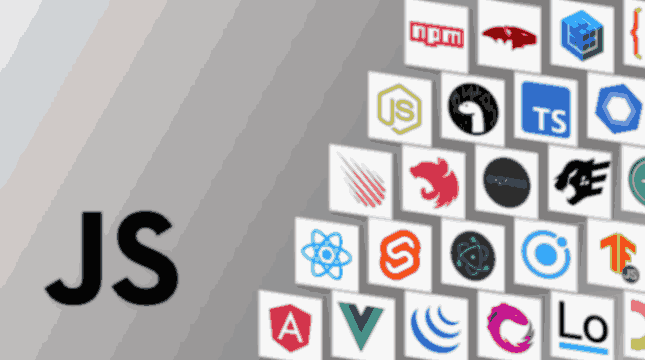Introduction
JavaScript frameworks have revolutionized web development, making it easier, faster, and more efficient to build complex web applications. With the rise of new frameworks and the evolution of existing ones, developers have a plethora of options to choose from. In this blog, we’ll explore the top 10 JavaScript frameworks in 2024, helping you decide which one fits your needs best.
The Rise of JavaScript Frameworks
JavaScript has come a long way since its inception in the mid-1990s. Initially used for simple scripting tasks, it has now become the backbone of modern web development. The introduction of frameworks like AngularJS in the early 2010s marked a significant shift, providing structured ways to build applications. Today, the landscape is rich with powerful frameworks, each offering unique features and benefits.
Why Use JavaScript Frameworks?
Using a JavaScript framework can significantly enhance your development process. They provide a solid foundation and pre-built components, reducing the amount of code you need to write from scratch. Frameworks also promote best practices, improve performance, and offer tools that streamline debugging and testing.
Criteria for Selecting a Framework
Choosing the right framework involves considering several factors:
- Community support: A vibrant community ensures continuous improvement and ample resources.
- Learning curve: Some frameworks are easier to pick up than others.
- Performance: Efficient frameworks can handle large-scale applications better.
- Scalability: Your framework should grow with your project.
Top 10 JavaScript Frameworks in 2024
1. React
Overview: React, developed by Facebook, is a popular library for building user interfaces. It’s known for its virtual DOM and component-based architecture.
Key Features:
- Virtual DOM for efficient updates
- Component-based structure
- Extensive ecosystem and tool support
Use Cases: Ideal for single-page applications (SPAs) and complex UIs.
2. Angular
Overview: Maintained by Google, Angular is a robust framework for building dynamic web apps. It offers a comprehensive solution with tools and libraries for every need.
Key Features:
- Two-way data binding
- Dependency injection
- Comprehensive CLI
Use Cases: Suitable for large-scale enterprise applications.
3. Vue.js
Overview: Vue.js is a progressive framework that is easy to integrate with other projects. It’s highly versatile and can be used for both small and large applications.
Key Features:
- Reactive data binding
- Simple integration
- Detailed documentation
Use Cases: Great for both beginners and seasoned developers working on SPAs.
4. Svelte
Overview: Svelte takes a different approach by shifting most of the work to compile time, resulting in highly optimized and performant applications.
Key Features:
- No virtual DOM
- Compile-time optimization
- Simplicity and readability
Use Cases: Perfect for projects needing high performance and low bundle sizes.
5. Ember.js
Overview: Ember.js is designed for creating ambitious web applications. It emphasizes convention over configuration and has a strong community backing.
Key Features:
- Convention over configuration
- Ember CLI
- Strong conventions and best practices
Use Cases: Best for large-scale, ambitious projects that require robust solutions.
6. Next.js
Overview: Next.js, built on top of React, is a framework for server-side rendering and generating static websites.
Key Features:
- Server-side rendering
- Static site generation
- API routes
Use Cases: Ideal for building SEO-friendly and high-performance web applications.
7. Nuxt.js
Overview: Nuxt.js is built on Vue.js and is similar to Next.js but tailored for Vue’s ecosystem. It supports both server-side rendering and static site generation.
Key Features:
- Server-side rendering
- Modular architecture
- Powerful routing
Use Cases: Great for building universal Vue applications.
8. Meteor
Overview: Meteor is a full-stack platform that allows for rapid prototyping and produces cross-platform code.
Key Features:
- Full-stack capabilities
- Real-time updates
- Integrated with MongoDB
Use Cases: Suitable for real-time applications and rapid prototyping.
9. Aurelia
Overview: Aurelia is a forward-thinking framework that leverages modern JavaScript to enable a clean and modular codebase.
Key Features:
- Convention over configuration
- Clean architecture
- Extensive support for ES6
Use Cases: Ideal for projects where clean, maintainable code is crucial.
10. Alpine.js
Overview: Alpine.js offers a minimal framework for composing behavior directly in your HTML, much like Vue.js but much lighter.
Key Features:
- Lightweight
- Minimalist approach
- Reactive components
Use Cases: Perfect for adding interactivity to existing static pages without a significant overhead.
How to Choose the Right Framework for Your Project
Selecting the right framework depends on your project requirements and your team’s expertise. Consider the type of application, performance needs, scalability, and maintenance when making your choice. It’s also important to look at the learning curve and community support to ensure your team can efficiently adopt and utilize the framework.
How can TechDotBit help you about Frameworks in JavaScript?
TechDotBit is your go-to resource for everything related to JavaScript frameworks. From expert reviews and tutorials to the latest news and community support, we provide the tools and knowledge you need to succeed in your development journey. Whether you’re just starting out or looking to deepen your expertise, TechDotBit is here to help you navigate the world of JavaScript frameworks with confidence.
Reach out to us today in order to learn more about how we can help you about JavaScript Frameworks for your organization.
Conclusion
In 2024, JavaScript frameworks continue to evolve, offering developers an array of powerful tools to create dynamic and efficient web applications. Whether you’re working on a small project or a large-scale enterprise application, there’s a framework out there that fits your needs. Explore, experiment, and find the one that best aligns with your project goals and team skills.
FAQs
What is the best JavaScript framework for beginners?
Vue.js and React are often recommended for beginners due to their simplicity and extensive documentation.
How do I migrate from one JavaScript framework to another?
Migration depends on the frameworks in question, but generally involves understanding the differences, rewriting components, and ensuring compatibility.
Can I use multiple frameworks in a single project?
It’s possible but generally not recommended due to increased complexity and potential conflicts.
How often should I update my JavaScript framework?
Regular updates are important to benefit from the latest features, performance improvements, and security patches.
Are JavaScript frameworks necessary for small projects?
Not always. For simple tasks, vanilla JavaScript or minimal frameworks like Alpine.js can be sufficient.








